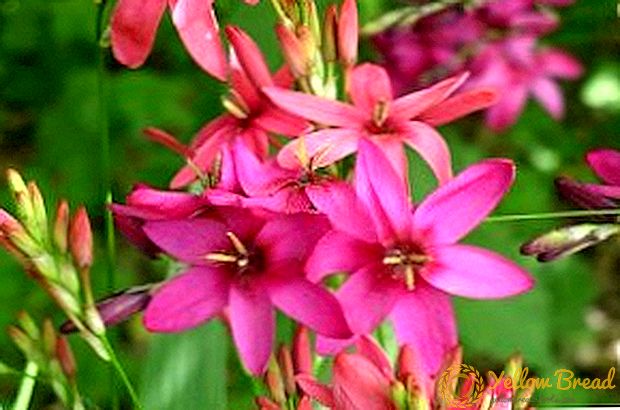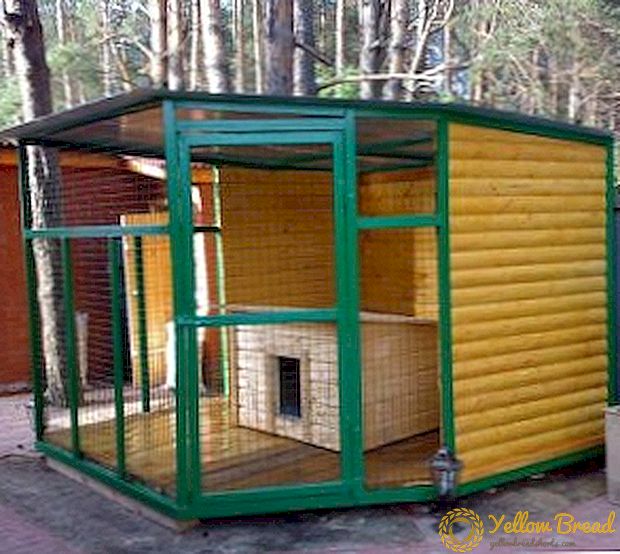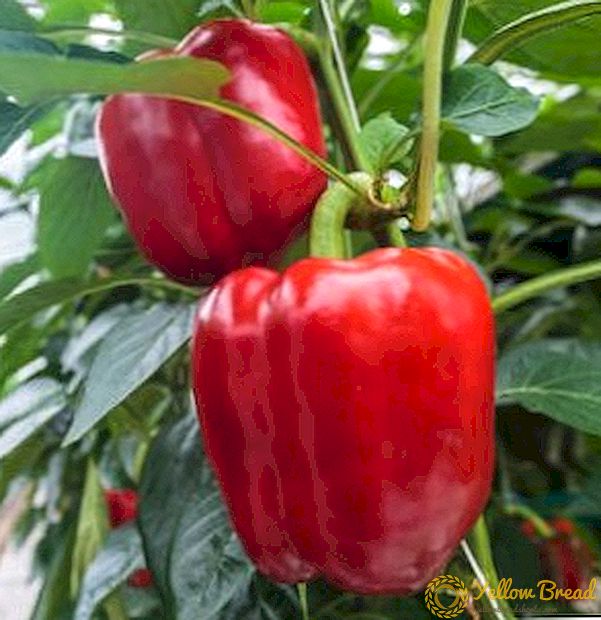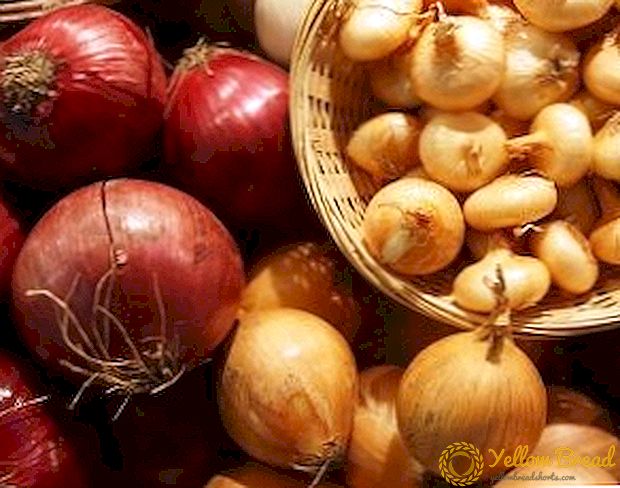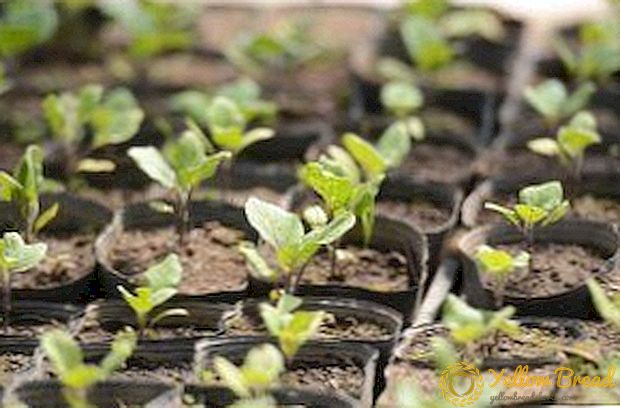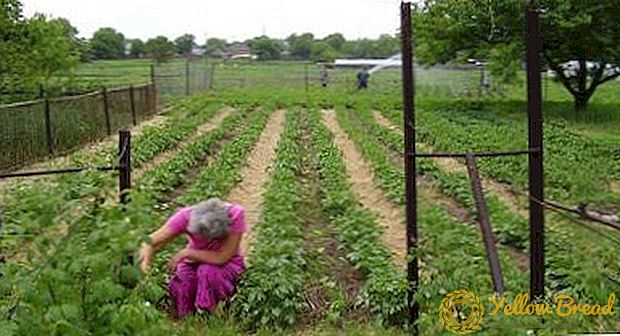
“Lugovskiy” or “Lugovskoy” is a popular potato variety that is widespread in farms and private farms. It has a pleasant taste, nutritional value and high starch content. The variety is very productive, the bushes rarely get sick, and the seed material is not prone to degeneration.
What is good potato "Lugovskoy", a description of the variety and photos - you will find everything you need in this article.
Potato variety "Lugovskoy": photo and description
| Grade name | Lugovskoy |
| general characteristics | mid-season table variety with a stable high yield |
| Gestation period | 70-80 days |
| Starch content | 12-19% |
| Mass of commercial tubers | 80-165 gr |
| The number of tubers in the bush | 10-15 pieces |
| Yield | up to 515 c / ha |
| Consumer quality | good taste, used for mashed potatoes and starch production |
| Recumbency | 97% |
| Skin color | pink |
| Pulp color | white |
| Preferred growing regions | North, North-West, Central, Volga-Vyatka, Central Black Earth, North Caucasus, Lower Volga, Ural, West Siberian, East Siberian, Far Eastern |
| Disease resistance | relatively resistant to late blight |
| Features of growing | responsive to deep soil loosening and hilling |
| Originator | Ukrainian Institute of Potato at AAN |
Brief description of the potato variety “Lugovskoy”:
- tubers of medium size, weighing from 100 to 130 g;
- oval shape, with a blunt rounded tip;
- neat tubers aligned in weight and size;
- the peel is light pink, glossy, thin, smooth;
- eyes are superficial, small, hardly noticeable;
- the pulp on the cut is white;
- high starch content, ranging from 12 to 19%;
- tubers are rich in proteins, vitamins, amino acids.
These photos show the tubers of the potato variety “Lugovskoy”:



Specifications
The grade belongs to table, mid-season. The growing season is 70-80 days. Productivity is high, official trials have registered receipt of 514 centners per hectare.
You can compare the yield of Lugovsky with other varieties based on the data in the table:
| Grade name | Yield |
| Lugovskoy | up to 515 c / ha |
| Melody | 180-640 c / ha |
| Margarita | 300-400 centners / ha |
| Alladin | 450-500 c / ha |
| Courage | 160-430 c / ha |
| Beauty | 400-450 c / ha |
| Grenada | 600 kg / ha |
| The hostess | 180-380 c / ha |
| Vector | 670 c / ha |
| Mozart | 200-330 c / ha |
| Sifra | 180-400 centners / ha |
Potatoes are sensitive to fertilizing and soil moisture,under favorable climatic conditions, the yield increases. Collected tubers are well stored, for a long time without losing commercial quality. Transportation is possible.
The bush is compact, erect, the stems are not too spreading, the formation of green mass is moderate. The leaves are medium-sized dark green, dull, with a small down and clearly traced veins. The corolla is compact, assembled from large white or cream flowers. The flowering is short-lived, the berries are not tied or quickly fall off.
 Root system is powerful, 10-15 large tubers are formed under each bush. The number of small things and ugly root vegetables is minimal.
Root system is powerful, 10-15 large tubers are formed under each bush. The number of small things and ugly root vegetables is minimal.
Variety prefers light soils on the basis of black soil or sand. On heavy loamy soil the bushes get accustomed badly, significantly reducing the yield.
Plants need dosed irrigation, organic dressings and frequent hilling. It is recommended to mulch the soil, preserving its moisture and protecting the planting from weeds.
Potatoes resistant to many dangerous diseases: potato cancer, common scab, black leg, various viruses.Rarely affected by late blight of the tubers or leaves. Root summer may cause root or top rot.
Sort It has a very pleasant taste: saturated, balanced, without excessive dryness or wateriness. Due to the high content of starch cooked tubers become very tender, crumbly, melting in the mouth.
They are ideal for making mashed air, including baby food. Potatoes can be braised, used to prepare a variety of fillings. For frying or stuffing is not suitable. Possible industrial processing (preparation of sublimated puree).
Origin
Variety potato "Lugovskiy" bred by Ukrainian breeders. The patent is owned by the Ukrainian Potato Institute at the Academy of Agrarian Sciences. The variety is not included in the State Register of the Russian Federation, but it is widely distributed in various regions of Russia.
Advantages and disadvantages
The main advantages of the variety include:
- excellent taste;
- early maturation;
- high yield;
- possibility of long-term storage;
- good commercial quality of tubers;
- high nutritional properties of root crops;
- resistance to mechanical damage;
- tolerance for the vagaries of weather;
- unpretentious care;
- resistance to many diseases.
There are practically no flaws in the variety. Feature can be considered sensitivity to soil nutrition and proper irrigation.
In the table below you will find indicators of the main important characteristics of other varieties of potatoes for comparison with Lugovsky:
| Grade name | Mass of commodity tubers (grams) | Recumbency |
| Lugovskoy | 80-165 | 97% |
| Queen Anne | 80-150 | 92% |
| League | 90-125 | 93% |
| Milena | 90-100 | 95% |
| Elmundo | 100-135 | 97% |
| Serpanok | 85-145 | 94% |
| Svitanok Kiev | 90-120 | 95% |
| Cheri | 100-160 | 91% |
| Bryansk delicacy | 75-120 | 94% |
Features of growing
A large, intact potato is selected for sowing. Future productivity depends on the quality of planting material; therefore, it is not worth saving on its acquisition. Tubers pickled, treated with growth stimulants and spread for germination.
 Planting begins when the soil warms to 10-12 degrees.. In colder ground tubers can rot. At the time of tying tubers dosed irrigation is important.
Planting begins when the soil warms to 10-12 degrees.. In colder ground tubers can rot. At the time of tying tubers dosed irrigation is important.
Potatoes tolerate short-term drought, but with a constant lack of moisture, the roots are shallow. Ideal - drip irrigation.
If it is not possible, during the period of tuberization, planting 2-3 times is watered by hand, with soil not less than 50 cm.
You can increase soil fertility adding peat and humus when landing. Useful and making wood (preferably birch) ash.
During the planting season it is recommended to feed divorced mullein or bird droppings. Mineral dressing is also possible. Superphosphate, potassium sulfate, magnesium sulfate positively affects the growth of potatoes.
Harvesting is recommended at the end of the growing season, although the first tubers can be broken in the middle of summer. A week before digging up the tubers, it is worth cutting the tops, the roots will be larger.Harvested potatoes are dried in the border or under a canopy, and then removed for storage.
Diseases and pests
 The variety is quite resistant to many diseases. It is rarely affected by potato cancer or common scab, and does not suffer from viral infections.
The variety is quite resistant to many diseases. It is rarely affected by potato cancer or common scab, and does not suffer from viral infections.
Early maturation saves tubers from phytophthrosis. To prevent plants from becoming infected, it is recommended not to delay harvesting. During an epidemic, phytophthora can be preventively treated by planting with copper-containing preparations.
Juicy potato tops attract insect pests: aphid, spider mite, Colorado potato beetle, cicadas. In hot climates, spraying with insecticides or non-toxic bio-preparations is recommended.
In cool regions, bushes are affected by pests much less frequently. As a preventive measure, tuber dressing before planting, soil disinfection, and timely weed control will help.
 We also bring to your attention useful information about the fight against Colorado beetles in your garden.
We also bring to your attention useful information about the fight against Colorado beetles in your garden.Read articles about the use of chemicals and the use of folk remedies.
Anyone wishing to receive consistently high potato harvestIt is worth paying attention to the Lugovskiy variety. With the observance of the simplest agrotechnical rules, he does not disappoint even amateurs; professionals manage to achieve record harvests.

